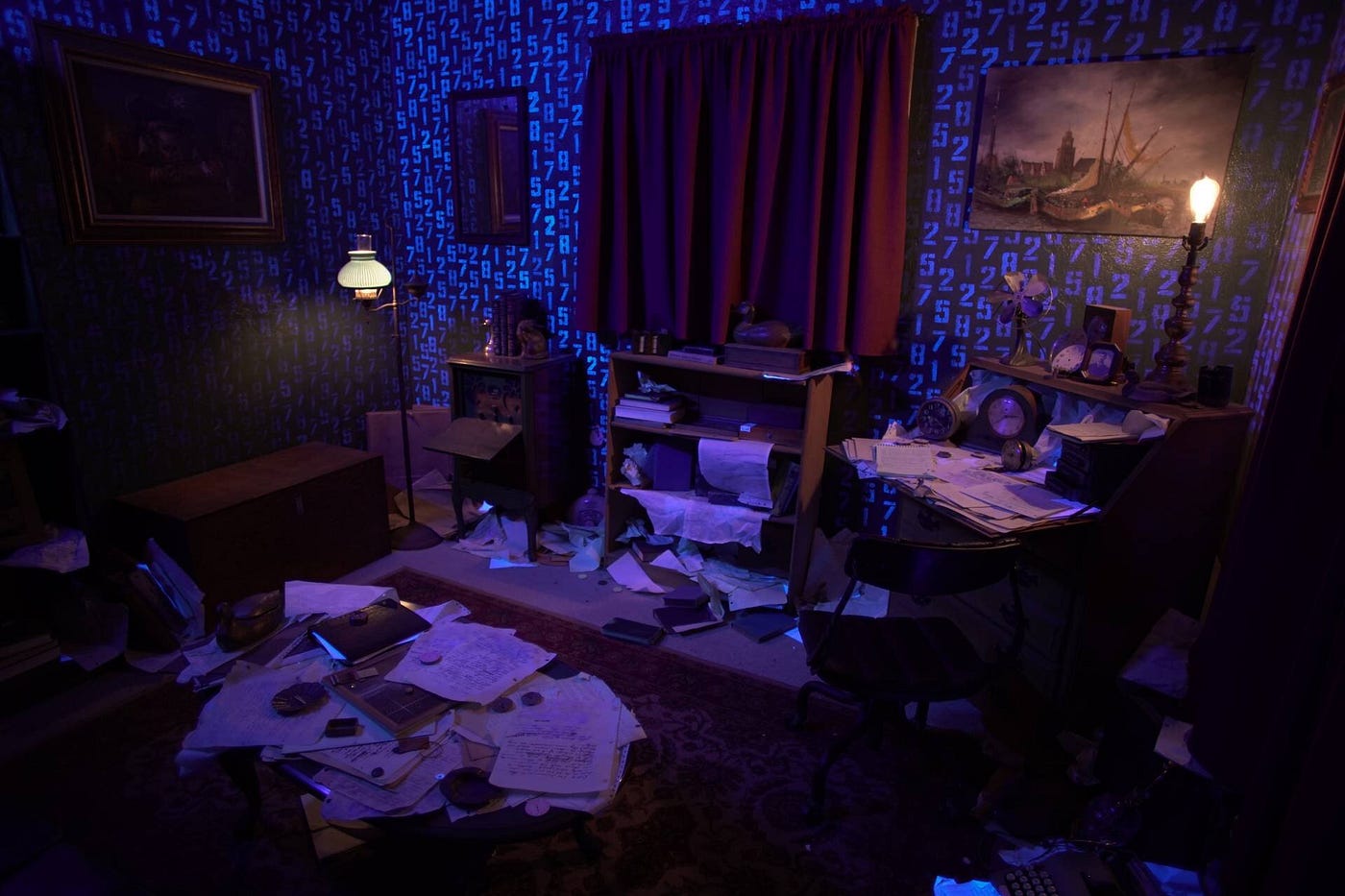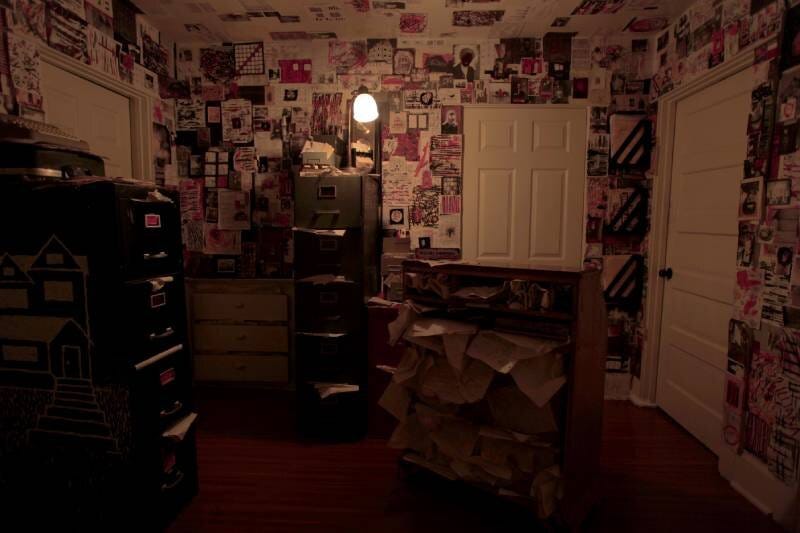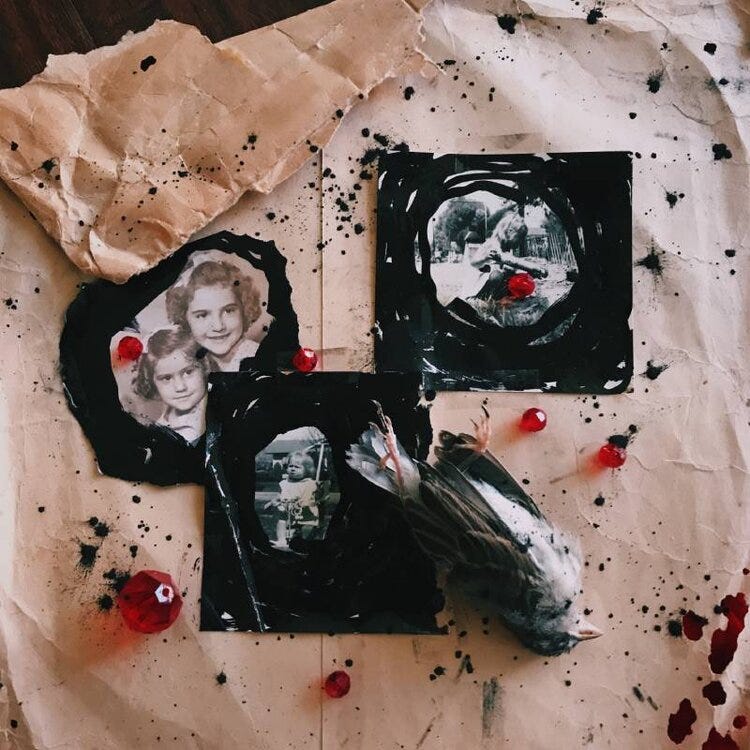Adapted from two immersive theatre shows of the same name, the podcast series In Another Room is an anthology collection of ghost stories, each one taking place in, well, a different room of the same house. Each episode of the eight episode series by Violet Hour Media and E3W Productions shares a different tale of someone who lived, and died, in that particular house.
Two LA-based staff members, Anthony Robinson and Kevin Gossett, who were familiar with both original immersive theatre shows (staged in 2017 and 2018) and Denver-based correspondent Danielle Look, who wasn’t, provide their thoughts below.
(Minor spoilers follow.)
Danielle Look, Denver Correspondent

At first I was unimpressed with the idea of a podcast series revolving around a fictional haunted house. It sounded cliche and unoriginal, but I was curious to listen to a scripted horror podcast and wanted to give it a try nonetheless. The only enjoyable horror podcasts I’d listened to prior were non-fiction — true crime stories retold by a narrator, sometimes supported with relevant interviews. Attempts at fictional storytelling via podcast had always failed to immerse, and therefore failed to impress, me: a singular voice, telling a linear story, that begins and ends in less than 30 or 60 minutes.
So I was pleasantly surprised when the production quality of In Another Room immediately impressed me. The actors and sound design have the magic ability to effortlessly transport me through time. The story begins in the present as the house’s questionable history is revealed and I’m introduced to Wendy Morrow, the story’s protagonist. In a matter of minutes, I’ve learned that she’s been researching the house for years. I listen in on a dramatic phone call with her daughter, and follow along as she enters the house, escorted by its current owner, who strongly suggests she’s made a grave mistake by getting involved.
The format feels a bit like a found footage story, as it’s told in bits and pieces that challenge the listener to fill in the gaps between what’s known for sure. It also creates tension and anxiety by letting you listen to the events unfold without explicitly narrating them. Instead, something would happen and I’d make a guess about what it was, based on the sound effects and character dialog.
The script and vocal performances painted perfect moving images in my mind, rarely leaving me confused about what was happening, even when no words were being said. Wendy’s eccentric audio recordings from inside the house helped confirm the events I was seeing in my mind (or put me back on track when I wandered in the wrong direction) but she never entered my awareness as a narrator, per se.
The other characters’ expression of vulnerability, loss, or betrayal give the story, paradoxically, the authenticity needed to suspend belief. In “The Ballroom” episode, for example, what begins as a familiar story involving a fraudulent medium takes an interesting turn once she has the opportunity to revisit her colorful past. With three humans and one spirit present for the events that follow, the vivid sound effects and dramatic voice acting provide much depth and dimension.
Wendy herself seems a bit cliche and over the top, but I quickly realize it’s because she’s gone mad from her obsession with the house. She’s read every single case file for every single person who’s died in the house, and she keeps wondering repeatedly what the house is trying to tell her, as if a house could have the ability to communicate back to a human.
Don’t let the haunted house tropes turn you off, though. I almost did, and I’m glad I didn’t. Allow yourself to indulge in some good old-fashioned ghostly storytelling, because that’s exactly what each episode is. You get transported back, in various clever ways, to the exact day that each of the characters dies. You are there to hear the backstory that leads up to the moment that they pass inside the house, and then audibly witness their brutal deaths. Not only is it jarring to hear — and not see — the violence unfolding, but it’s also a bit heart-wrenching. Unlike a horror movie where the story often gets in the way of the action and savagery, the expertly told story leading up to the climax is the action and savagery. It emotionally bonds the listener to the characters, then immediately proceeds to shatter those bonds.
And then Wendy is always there asking why, wondering what the significance is of the specific case that the house is trying to communicate. Sometimes you just want to appreciate a good ghost story without trying to pick it apart for clues, but Wendy won’t let that happen. Sometimes she makes some pretty big logic leaps that probably warrant questioning, but then you move on to the next story, in another room of the house, and just roll with Wendy’s conclusions.
What I admire most about In Another Room is the quality of the acting and production, not to mention the novelty of listening to, instead of looking at, the stories unfold. Naturally, high quality speakers or headphones will only enhance this experience, if they are not outright required. I listened to these episodes exclusively in my car because no place else offered the solitude I sought for the experience. It simply wouldn’t have been the same with earbuds in while sitting next to someone on the bus or in a coffee shop. I also don’t own audiophile-approved gear, so I knew I’d immediately be doing a disservice to the show otherwise. I believe listening in my car also enhanced the immersive factor, much like the difference between watching a movie at home or in the theater with rumbling surround sound.
In the end, these stories stand on their own, but ultimately tie together in a really satisfying way. I’d recommend this podcast to any horror fan, but only when you can listen distraction-free and really sink into the stories.
Kevin Gossett, LA Reviews Editor

When adapting any kind of story, there’s always a chance that something is lost in the transition from one medium to another. Things that work on the page don’t work on the screen. Things that work in an audio format lose something when they can only be read. And then there’s the added difficulty of separating the successes of one format from the failures in another. Which is all to say that adapting something from an immersive theatre piece into something else is always going to be hard. Which is my long-winded way of saying that In Another Room the podcast didn’t quite work for me.
In Another Room was a great show and In Another Room 2 was a flat out masterpiece (and, fun fact, technically all three of these shows are titled In Another Room, but I have to differentiate them somehow), but they were also fully realized pieces of immersive theatre. The world they created through amazing production design and the stories told within those rooms are inexorably linked. So, it makes it weird to have the podcast be a greatest hits mashup of stories from IAR and IAR2 because it mostly made me think of those shows, feel good to hear them in some medium, and, then, feel bummed about the lack of in-person immersive theatre. (That last one isn’t a strike against the show, it’s just a, “this sucks man,” moment.)
My biggest issue with the podcast was the shift towards a “horror” show. That mostly takes the form of an audio overload sequence near the end of almost every episode; it’s fine the first time, but the returns diminish quickly. It’s a strange way to insert a scary element into In Another Room when it doesn’t need one. The stories themselves are usually strong enough on their own and almost feels like they don’t trust the audience to grasp the existential horror that’s already present. The immersive theatre shows certainly had scary elements, but they never took away from everything else going on.
That idea of changing the show to work with a new audience dampens a few other things. In all three versions, there’s a running idea that the house causes many of the problems that the people within it experience. In the immersive theatre shows, it frequently feels more like a metaphor or a way to tell a story about a certain situation. Especially in IAR2, the stories are dark, but tinged with moments of exquisite beauty and hope. However, the podcast goes further in the direction of the malevolent house. Again, the stories are mostly strong here, so it feels like a misstep to remove the shading and complexity. This same problem truly rears its head in a big way for the ending of the series which left a bad taste in my mouth, one that affected the way I felt about the whole thing.
It mostly left me wondering what exactly the point of this adaptation was. To be sure, I appreciate E3W’s efforts to translate their existing work into different formats and make it more accessible to more people while the pandemic is still going on. But being divorced from the incredible sets and the complexities that were previously there leaves this adaptation feeling a little lost.
Anthony, Associate Editor, Culture

When I was a little kid, my grandmother introduced me to one of her favorite pastimes when she was a child: listening to radio dramas. She found a copy of Orson Welles’ infamous War of The Worlds broadcast and I was hooked. I spent countless hours listening to re-broadcasts of shows like The Shadow, The Adventures of Harry Lime, and the horror staple Lights Out. I have long since been primed to appreciate the Theatre of The Mind, and having an evocative adaptation of the excellent immersive experiences, In Another Room 1 & 2, into a comfortable medium seems tailor made for me.
I was not disappointed.
In the 2017 edition of the embodied production, we the audience were cast as interested ghost hunters called in to bear witness to Wendy Morrow’s driving obsession. Before long we learn that Dr. Morrow is just another of the lives that is swallowed by the house, and we may just be next on the list. Removed from the theatrical reality of the house, the podcast has us follow Wendy’s spiral through obsession, madness, and back again, as she touches each storied haunting that inhabit the rooms.
Here is where E3W has kept it simple: they have taken the individual narratives of their two iterations of In Another Room’s various hauntings and played them out in audio, as close as possible to the show itself. Roles once inhabited by the audience are fleshed out with a full character, and in other cases individual “one on one” interactions are transformed into into fuller, richer scenes of the narrative, using Wendy as the surrogate for the audience’s point of view and the thread that pulls all the storylines together.
What was once two separate haunted house narratives are tied together by deft writing to create, for the most part, a seamless, new arching story of both loss and redemption, and ultimately, hope.
For those that are reliving their experience through this podcast, like me, there are both familiar moments that come back to life like the ghosts that they represent, as well as new turns in the connective tissue of Wendy’s story. Further, there are entirely new stories that tell us more of the history of the house, which add to its mystique and horror.
The result is a lush, well-acted, high production value, modern take of the old time radio plays — full of melodrama, horror, and addictive fun. E3W has brought back most of the original cast, as well as some newcomers to create a well polished, rich, evocative ghost tale that is worth a listen. It is at once a new experience, and an adventure in nostalgia.
In Another Room, the podcast, is available to listen to now.
NoPro is a labor of love made possible by our generous Patreon backers. Join them today!
In addition to the No Proscenium web site, our podcast, and our newsletters, you can find NoPro on Twitter, Facebook, YouTube, Instagram, in the Facebook community Everything Immersive, and on our Slack forum.
Office facilities provided by Thymele Arts, in Los Angeles, CA.


















Discussion